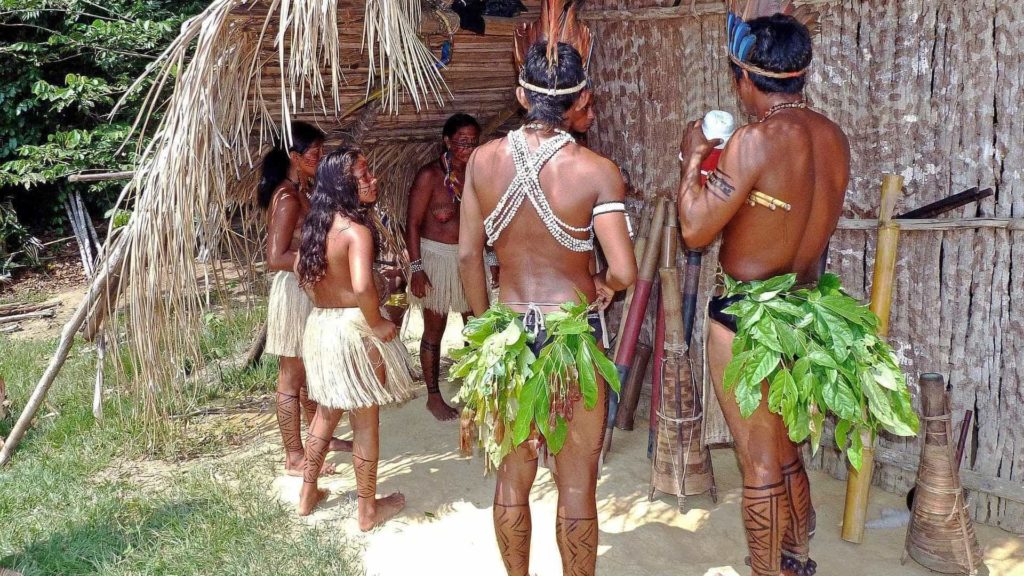RIO DE JANEIRO, BRAZIL – The first year of the Jair Bolsonaro government was marked by an dramatic increase in invasions, illegal exploitation, and damage to indigenous communities throughout the country. The report Violence Against Indigenous Peoples of Brazil, published annually by the Indigenous Missionary Council (CIMI ), an organization under the National Brazilian Bishops’ Council (CNBB), shows that in 2019 there was a 135 percent increase in these occurrences compared to the preceding year.
The data show that last year 256 cases of “possessory invasions, illegal exploitation of resources and damage to property” were recorded in at least 151 indigenous lands, of 143 peoples, in 23 states in the country. This represents more than double the 109 cases recorded in 2018.
Among the main motivations for these violent practices are the illegal exploitation of timber, the opening of prospecting sites, and the expansion of areas for agricultural production, in addition to predatory fishing, hunting and land squatting. The report shows that in 2019 there were also 276 cases of violence against indigenous people, more than double the number of occurrences in 2018 when 110 indigenous people were victims of some kind of violence.

Last year, 113 indigenous people were murdered, according to official data from the federal Special Indigenous Health Secretariat (SESAI). The figure is slightly lower than the total recorded in 2018 when 135 indigenous people were killed. The two states with the highest number of murders last year were Mato Grosso do Sul (40) and Roraima (26), historically marked by indigenous land invasions.
CIMI states that the data provided by SESAI on “deaths resulting from attacks” do not allow more in-depth analysis, because they do not include information on the victims’ age group and people, nor the circumstances of these murders. “They are still subject to review, which means that the number of cases may be higher,” reports the NGO.
“Unfortunately, it is observed that in 2019 the indigenous population of Mato Grosso do Sul (the second largest in the country) continued to be the target of repeated and violent attacks, in which there is even a record of torture practices, including of children,” reads the CIMI report.
No demarcations
The survey also claims that Bolsonaro has not only fulfilled his pledge to “not demarcate one centimeter of indigenous land,” but has also blocked all processes that were at an advanced stage of certification. The demarcation of indigenous lands requires the President’s signature to be effectively certified, after all the technical studies have been completed and approved by the National Indigenous Foundation (FUNAI) and the Ministry of Justice.
According to the CIMI report, the Justice Ministry returned 27 demarcation processes to FUNAI for revisions in the first half of 2019 alone. “This move will undoubtedly imply greater obstacles, if not the hindrance to compliance with the constitutional rights of the indigenous who claim their ancestral territories,” declares the institution.
The indigenous lands are, according to CIMI, the areas that most protect the forests and their ecosystems. It is no coincidence that the majority of invasions occur on these lands, where today the highest quality wood is found, such as ipê which is considered the “new mahogany” of the forest.
Patch burning
Historically, the presence of indigenous peoples within their territories acts as obstacles to the advance of deforestation and other dispossession processes. The record increase in criminal fires that devastated the Amazon and the Cerrado savannah in 2019 is directly linked to criminal practices to access indigenous territories, according to CIMI.
“Often, patch burning is an essential part of a criminal land grabbing scheme, in which the ‘cleaning up’ of extensive forest areas is performed to enable the implementation of agricultural enterprises,” says the CIMI document. “In short, this is how this chain operates: invaders deforest, sell the timber, set fire to the forest, start grazing, surround the area and, finally, with the ‘clean’ area, place cattle and then plant soy or corn.”
Source: Estadão Conteúdo

